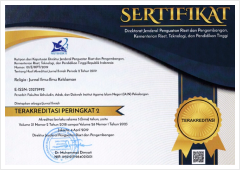HERMENEUTIKA HADIS SYUHUDI ISMAIL
Keywords:
the contextualisation of hadis, syuhudi ismail, hermeneuiticsAbstract
Hadis as a historical text should be in keeping with any social changes across times and situations of any kind. This is because Hadis is viewed as a sacred text which is shalih li kulli zaman wa makan (i.e., valid anywhere and anytime), despite ‘the impression’ that when being comprehended literally it seems at odd with the present- day context. Accordingly, research into matan within Hadis should adapt to the developing theories, including those of hermeneutics invented by orientalist scholars. In this regard, Gadamer’s hermeneutic presupposes three compulsory components in the study on texts, i.e., prejudice, time, and product. The component of time implies the importance of the contextual background that may underlie the emergence of Hadis (asbab al-Wurud), in an attempt to understand matan hadis as is requested by muhaddis. Moreover, the fact that matan hadis frequently take shape via the sentences of majazi, ramzi, and qiyasi, which altogether are closely connected to grammatical analyses, suggests how important it is to take into account the linguistic aspects in studying Hadis. This issue has been raised within the hermeneutics that emphasises the importance of the grammar in studying Hadis as was initiated by Schleiermacher. It seems that the contextualisation of Hadis as was done by Syuhudi Ismail also considers the hermeneutics. This paper tries to uncover and explain the similarities between Syuhudi Ismail’s contextualisation method and the hermeneutics in studying Hadis.














